
This page last revised 25 August 2006 -- S.M.Gon III
Introduction
Ecoregion
Conservation Targets
Viability
Goals
Portfolio
TNC Action Sites
Threats
Strategies
Acknowledgements
▫
Tables
Maps & Figures
CPT Database
Appendices
Glossary
Sources
.
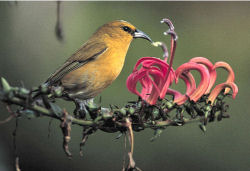
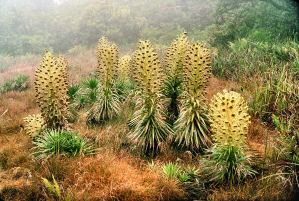
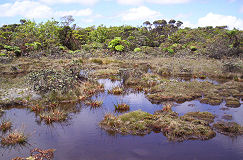
Montane bogs, such as the Alaka'i, are a hallmark of the Montane Wet System.
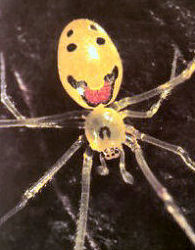
The Hawaiian happyface spider (Theridion grallator) is one of thousands of native invertebrates in the montane wet system.
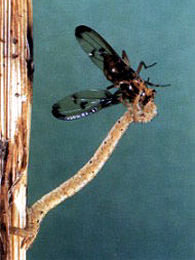
Hawaiian predatory caterpillars in the genus Eupithecia show highest diversity in montane wet system.
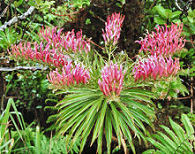
Lobeliads such as koli'i are prominent in the montane wet system, but are particularly vulnerable to pig disturbance.

The Hawaiian happyface spider (Theridion grallator) is one of thousands of native invertebrates in the montane wet system.

Hawaiian predatory caterpillars in the genus Eupithecia show highest diversity in montane wet system.

Lobeliads such as koli'i are prominent in the montane wet system, but are particularly vulnerable to pig disturbance.
Montane Wet System
Natural communities between 1,000and 2,000 m (ca 3,000 - 6,000 ft) elevation, receiving greater than 75inches annual precipitation, or otherwise bearing prevailingly wetsubstrate conditions comprise the montane wet system in theHawaiian High Islands Ecoregion. This system is found on theislands of Hawai‘i, Maui, Moloka‘i, Lāna‘i,O‘ahu, and Kaua‘i, and is best developed on the windwardside of the highest islands (Maui and Hawai‘i) and the summitregions of the moderately high islands, for example, the east flank ofMauna Kea, the northeast flank of Haleakalā (Maui), the summit of EastMoloka‘i, the summit of Lāna‘ihale (Lāna‘i), thesummit of Ka‘ala (Wai‘anae, O‘ahu), and the summitplateau of Wai‘ale‘ale and Alaka‘i, Kaua‘i. Ittypically above the lowand wet system and wet cliff system, and on Maui and Hawai‘i, below the montane mesic system. There are a number of naturalcommunities described within this system, including a variety of grasslands, shrublands, and forests. Biologicaldiversity is moderate to high in this system, and specialized plants and animals occur there, such as predatory caterpillars and lobeliads. The montane wet system is important habitat for the forest bird concentration.
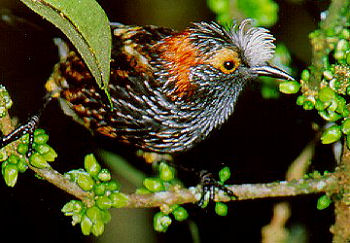
The 'ākohekohe, or crested honeycreeper (Palmeria dolei), is endemic to the montane wet forests of the East Maui conservation area.
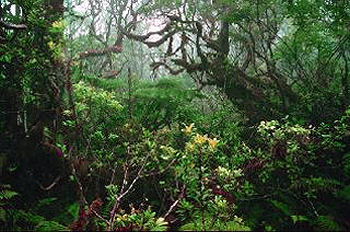
Lush,dense, and thick with epiphytic mosses, liverworts, and ferns, the'ōhi'a / 'olapa montane wet forest of Hanawī, East Maui is one ofdozens of Hawaiian natural communities nested within the montane wetsystem.
Natural communities and species of this system are listed among nested targets via the appendices.

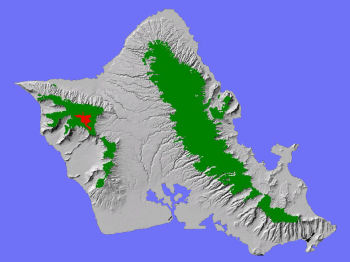
TheMontane Wet System on O'ahu (red area above) is restricted to the smallsummit section of the Wai'anae conservation area (left) at Ka'ala.
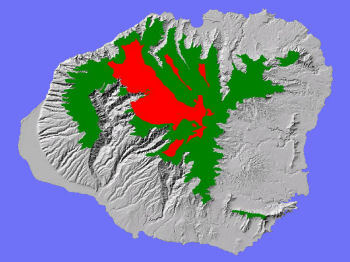
TheMontane Wet System on Kaua'i (red areas above) is of substantial size and occurs onthe high summit plateau in the remote central region of the island.

The 'ākohekohe, or crested honeycreeper (Palmeria dolei), is endemic to the montane wet forests of the East Maui conservation area.

Lush,dense, and thick with epiphytic mosses, liverworts, and ferns, the'ōhi'a / 'olapa montane wet forest of Hanawī, East Maui is one ofdozens of Hawaiian natural communities nested within the montane wetsystem.
Natural communities and species of this system are listed among nested targets via the appendices.


TheMontane Wet System on O'ahu (red area above) is restricted to the smallsummit section of the Wai'anae conservation area (left) at Ka'ala.

TheMontane Wet System on Kaua'i (red areas above) is of substantial size and occurs onthe high summit plateau in the remote central region of the island.

The Montane Wet System in Hawai‘i includes forests, bogs, and wet shrublands on the windward and summit regions of the high volcanoes.

The figures below depict the distribution of the Montane Wet System across the Hawaiian High Islands Ecoregion:
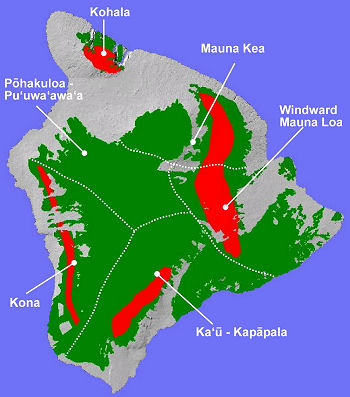
TheMontane Wet System on Hawai‘i Island (red areas above)occurs in five of the six conservation areas, being absent only from Pohakuloa - Pu'u Wa'awa'a.
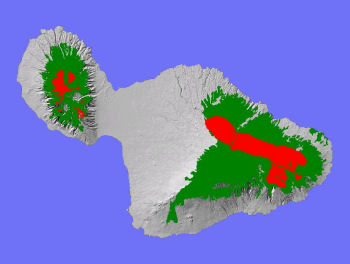
TheMontane Wet System on Maui (red areas above) occurs inthe northern flank of the East Maui conservation area (right) and onthe summit sections of the West Maui conservation area (left).
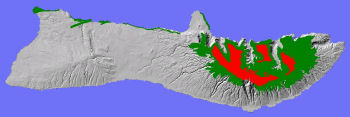
TheMontane Wet System on Moloka'i (red areas above) occurs onthe summit sections of the East Moloka'i conservation area.

TheMontane Wet System on Lāna'i (red area above) is of very limited size, and occurs at the summit peak (Lāna'ihale) of theLāna'i conservation area.

TheMontane Wet System on Moloka'i (red areas above) occurs onthe summit sections of the East Moloka'i conservation area.

TheMontane Wet System on Lāna'i (red area above) is of very limited size, and occurs at the summit peak (Lāna'ihale) of theLāna'i conservation area.